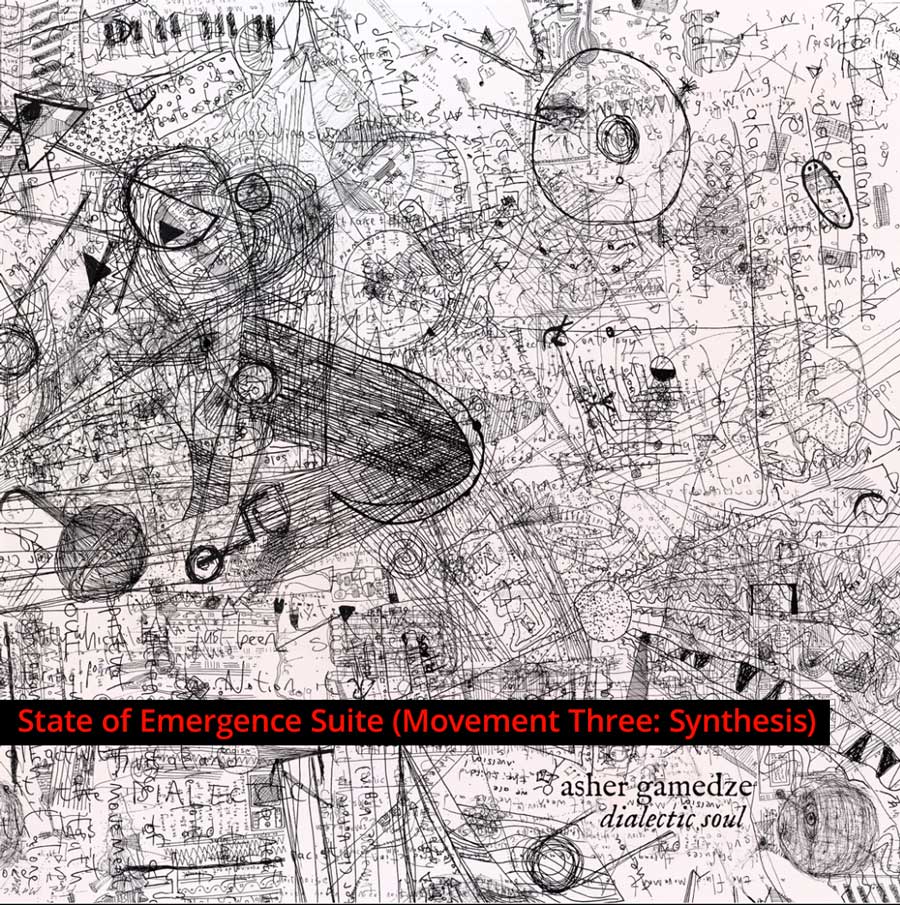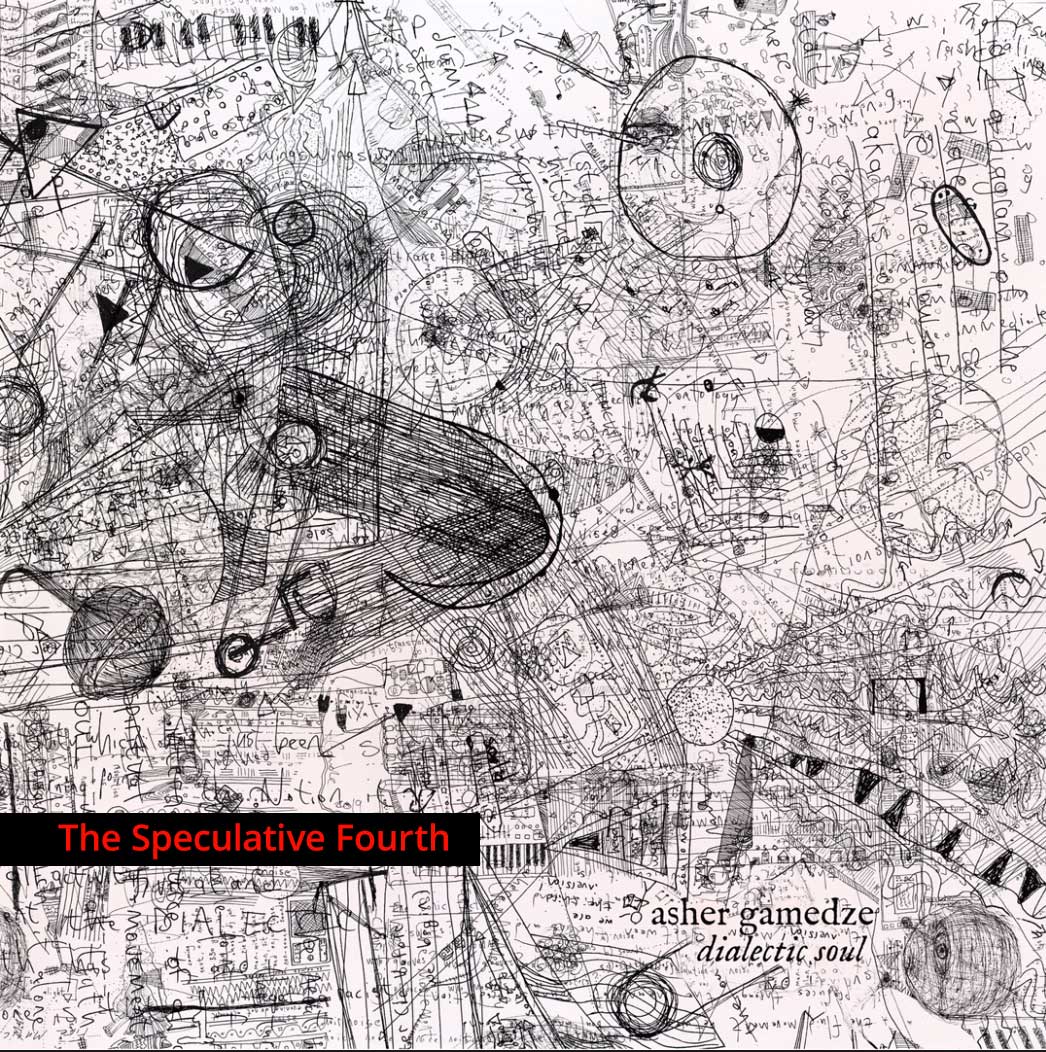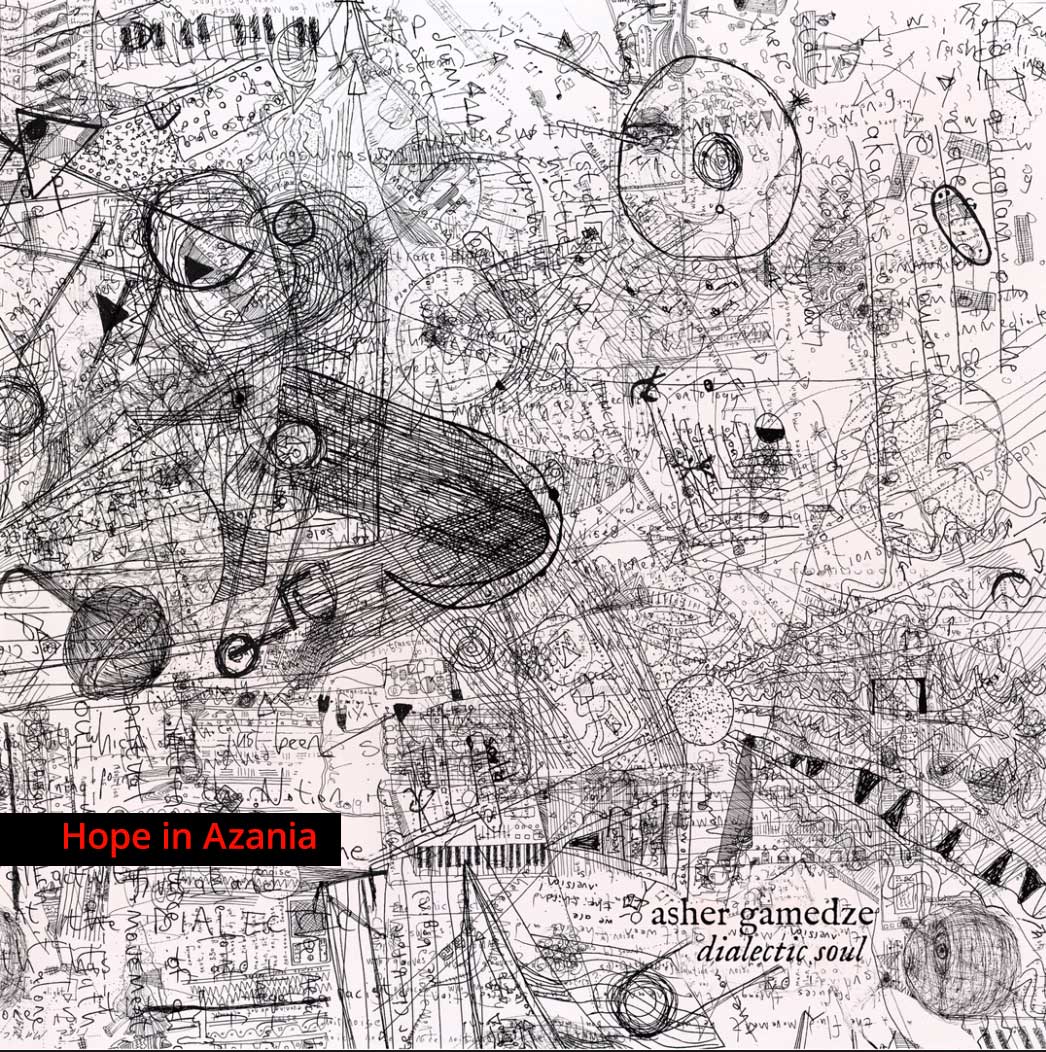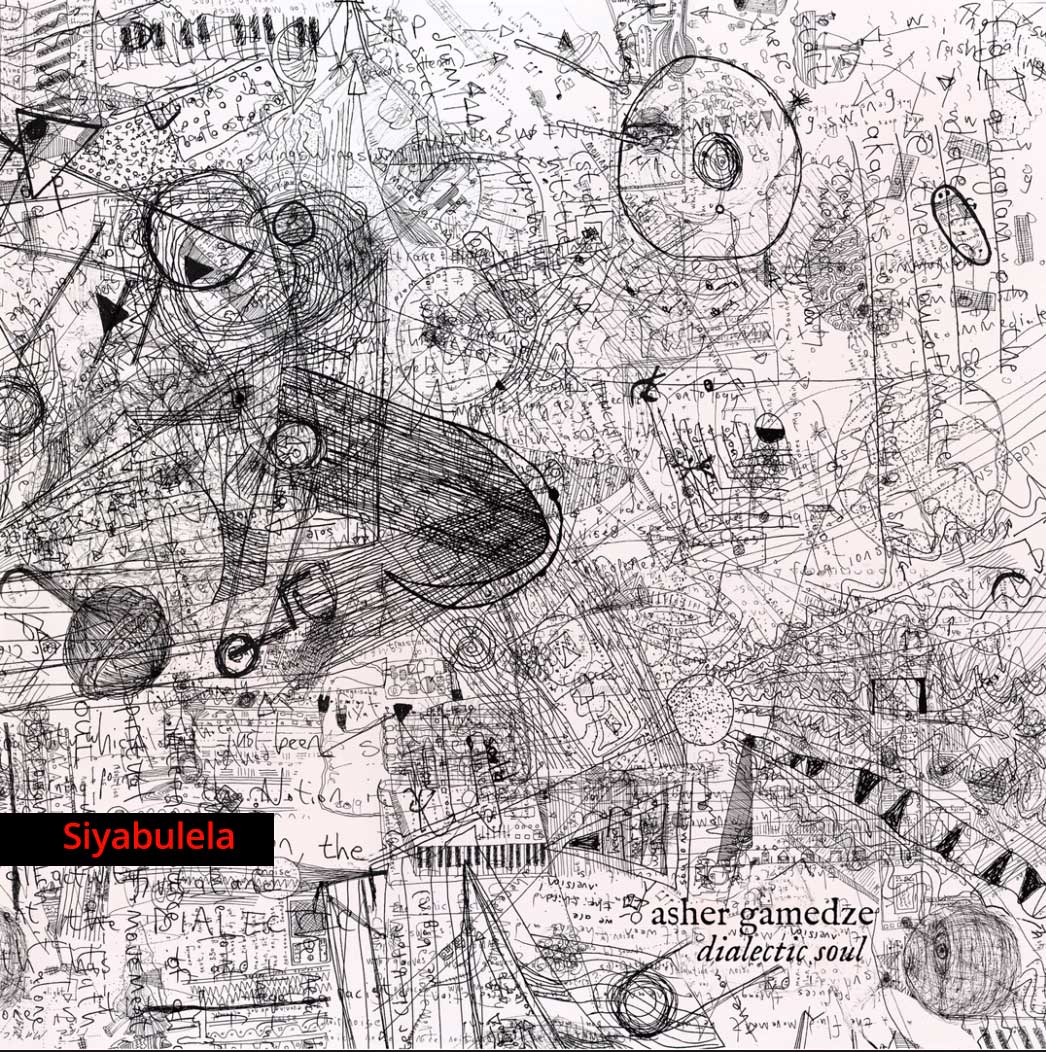This piece is an adaptation of a section of my MA dissertation: Asher Gamedze, 2018, It’s in the out sides: An investigation into the cosmological contexts of South African jazz, MA diss, UCT.

As the story goes, according to Maxine McGregor in her book Chris McGregor and the Brotherhood of Breath: My Life with a South African Jazz Pioneer; during their long time in exile a rift developed between Johnny Dyani and Louis Moholo over a question of musical direction and the ideological, interpretive and rooted dimensions thereof. The two had obviously been close collaborators and comrades in sonic and life pursuits since before they left South Africa in 1964 on a one-way ticket. Collective escapades of course included multiple Blue Notes dates, on stage and in studio, as well as the infamous Latin American tour with Steve Lacy, and being – as a drum-bass combination and as individual players – some of the most sought-after fire players in the dynamic and developing European free music scene of the 60s and the 70s.
Both were playing sporadically together in the Blue Notes and other formations at the time, and in the early 1970s, Chris McGregor was putting together the band The Brotherhood of Breath and wanted both Dyani and Moholo to be part of it. It was in this context that Johnny came to Chris telling him that he couldn’t stand to play with Louis anymore. He felt that their individual approaches to music had so widely diverged even as they shared so much history. Bra Johnny felt that South African musicians in exile were “in danger of losing their own musical language” due to the influence of the American avant garde tradition.[1]Maxine McGregor, Chris McGregor and the Brotherhood of Breath: My life with a South African jazz pioneer, (Rhodes University: Grahamstown, 2013, 2nd edition), 102. Louis Moholo was totally into the free thing;
Free music is it man, it’s so beautiful. The word ‘free’ makes sense to me. I know what I want; freedom, let my people go… and that’s interlinking with politics, they embrace each other. It’s a cry from the inside, no inhibitions.[2] Ibid.
This (apparent) contradiction, the question of (particular interpretations of) roots, source, direction and influence in ‘South African jazz’, is one that is ever-present in the music and is generative of some of its most interesting syntheses, many of which, interestingly enough, both Dyani and Moholo have been central to as players in their collective and individual capacity. However ironically, however unsettlingly, in this instance, in the Brotherhood, it fell to the white cat to resolve the contradiction about the directions of African music as it was in the context of his band that the apparent tension between positions needed to be addressed. Dyani was resolved – ‘he goes or I go.’ Magwaza had to choose. He chose Moholo.[3] While this narrative relies entirely on Maxine McGregor’s own version of the story, which on the one hand is definitely a problem, there is a way to clarify at least some of the details or at least outcomes of the dispute. Johnny Dyani does not feature on the first three Brotherhood of Breath, the band under Chris McGregor’s leadership, albums (Chris McGregor’s Brotherhood of Breath, 1970; Brotherhood, 1972; and Willisau, 1974). Harry Miller does duties on the bass frequencies while Louis Moholo makes time paradigms on the drums. The first Brotherhood of Breath album that Dyani appears on is Procession, 1978, which was recorded live in Toulouse in the previous year. So we can conclude that Dyani is not part of the Brotherhood from 1971 until 1977, or at the very least, does not take part in any recordings in that period. The lack of appearances on Brotherhood albums of Dyani in the period 1971 – 1977, despite the lack of a narrative and the explanation of/for his absence, is consistent with Maxine McGregor’s telling of the story. We can also deduce fairly reasonably from the presence of Moholo and the absence of Dyani from the first Brotherhood record recorded in 1971 that the dispute discussed by Maxine McGregor likely happened sometime before that, either late 1960s or 1970/71. Another interesting note is that Procession was the last Brotherhood recording that either Dyani or Moholo feature on. Some Brotherhood records that were recorded in the 1970s were released later, in the 1990s and 2000s, but those do not contradict what I laid out above. As to the reasons for these absences, it is beyond the realm of speculation for this paper.
Blue Notes for Mongezi
Back together, in a studio in London, 1975, reconciled after a few years since playing together, scattered across Europe – excepting Bra Nick Moyake who went back home, and passed on shortly after returning, and young blood Mongezi Feza – The Blue Notes gathered to mourn Bra Mongz’s passing. They recorded their grieving which was released that same year as Blue Notes For Mongezi. It was initially performed as a furious, free, unhinged, raw, open, vulnerable, honest, at times rooted and at times abstract three-hour continuous improvisation which was later cut into four movements. Sazi Dlamini writes about how, in exile, the alienation from the communal spaces where various rituals are practiced and observed back home, music became a space for the Blue Notes to perform and improvise certain rituals together. He reads Blue Notes for Mongezi as a ritual of improvised mourning.
On exile, Dlamini writes:
In the marginal solitarity of exile it is impossible to fulfil all the roles that native practice assigns – as part of the death ritual – according to the age-old understanding and responsibilities of age, gender and family, and social categories of cultural subjectivity.[4]Sazi Stephen Dlamini, The South African Blue Notes: Bebop, mbaqanga, apartheid and the exiling of a musical imagination, PhD thesis, (University of KwaZulu-Natal, 2009), 327.
Given this context of exile, alienation from home and the impossibility of replicating rituals that they knew from home to be associated with mourning, meant that the Blue Notes, needing and wanting deeply to mourn for their fallen comrade, had to approximate those rituals and make do with what and who they could draw on: which was each other and their music. Dlamini goes on to describe sections of the mourning for Mongezi. He describes how improvised music, in the Blue Note methodology, rooted in mbaqanga and post-bop sensibilities, becomes also the site of improvised ritual.
[Johnny Dyani] begins singing by calling out the deceased’s name in a ritualised Nguni manner of address of calling forth to peers and to those younger than oneself… [He] praises and conveys a testimony to the moral worthiness of the deceased’s character… these statements establish and evaluate the nature of the deceased’s social relations. In Dyani’s performance, the words are spoken directly to Mongezi as if he could hear:
Uziphathe kakuhle (You lived life with dignity and respect)
Hamba kakuhle (Farewell)
…
In a final vocalised improvisation of mourning, Johnny Dyani confronts the strained nature of personal relationships that exile had engendered between himself and the estranged Blue Notes, in statements that approximate the traditional Nguni practice of ukuthethela.…
Dyani continues with his vocal performance, now remarkable for the spoken rhythms of the ritualised igqirha calls and the choric exchange of the indigenous Xhosa diviner’s ceremony… When Dyani demands a ritual response – as of a chorus to an igqirha’s exhortations during a séance or a divination – it is Louis Moholo who responds in the place of an absent chorus.[5]Ibid, 327-338.
How ironic that, in this musical improvisation which bears the indelible although abstracted marks of marabi-derived harmony and the excursions of ‘free jazz’, in a social context constituted in between these influences and many others, in the absence of a chorus, it is Moholo who responds to Dyani: The very same cats who were on opposite sides of a dispute over roots and influences which led to Bra Johnny parting ways with Bra Louis.[6] It’s useful to mention here that the ‘dispute’ and the antagonism seems to have been perceived from Dyani’s point of view. Moholo did not necessarily perceive an antagonism, or even a contradiction, between their orientations. The two cats, together in the music, both grieving over their lost friend, are reconciled in that moment which suggests that mourning for their friend is more important than any assumed stylistic or ideological differences. The approach of the ‘South Africanist’ and the ‘avant gardist’ cooperate to abstract a ritual from its normative context and perform and extemporise it.
The music is an extension of the grief which the Blue Notes felt and the ‘ritual’ was merely their expression of grief based on certain practices, familiar to them, that they associated with mourning a lost loved one. Their mourning constituted both the inside and the outsides of the music as it was present in both, the reason for the performance but not limited to it. The mourning becomes the emotional content, taking the form of an improvisation through the familial and familiar in a context which is estranged or at least distanced from that where the ritual comes from, home. So the cats make do with what they have at their disposal. Playing with and for the recently deceased Mongezi (he is invoked and spoken to as if he is present with them although he has passed from his body) is more important than performing and observing particular rituals in fixity, which, in their situation of exile, would be an impossibility.
The fluidity that is the improvised ritual hints at the dynamism of traditional culture and the collusion and simultaneity of that with and in avant garde jazz. Dlamini suggests that, in the Blue Notes, it is their very geographical and spiritual alienation and distance of exile from the originary contexts of various, what he calls, indigenous traditions, that led or allowed them to deconstruct and reconstruct and make abstract the content of those traditions to the extent that they were largely unrecognisable in their new sonic setting – improvised/free music which, as we can see from Blue Notes For Mongezi, is at least partly constituted by or based in the tradition/al.
Exile, tradition and abstraction
Glimpsed in the Blue Notes notably, there is something in, or something about the experience of exile that can produce a certain orientation toward ‘tradition’ that opens it up to abstraction and motion in a way that is perhaps different to (or at least it’s harder to get to) a relation of proximity to a given tradition’s normative context. Of the Blue Notes’ process of repurposing of “traditional Xhosa repertoires,” and the deconstruction of those repertoires to the extent that their original form is sometimes unrecognisable, Dlamini says that:
As an abstraction of melodic, rhythmic and textual musical elements from their popular understanding within an indigenous musical context, this process acknowledges a level of cultural alienation among its practitioners.[7]Ibid, 295.
The separation, engendered by exile, from community, home, land, family, a person’s geographical and cultural milieu, opens cultural practices up, in a radically unstable way, to change. In other words, cultural practices are likely to change faster and more radically when the contexts of those practices change. Exile highlights that tradition and culture are always improvisations of themselves.
What if traditions and rituals are just ways of trying to get at something? What if they are just ways of trying to express something, methods of mourning and grieving, ways of celebrating, ways to help us get through life and methods to mark it and give its processes meaning? Exile, as an ontological relation to the concept and context of home and all things associated with home, asks the question of how you are going to make life in a new context. Since you are away from home and the original context of any of your traditions’ development, any practicing of them in the new context is by definition a form of abstraction (at the very least from their context).
And, as Dlamini says,
“the isolation of individuals as an essence of exile… presents a challenge to the concept of culture as a shared practice.”[8]Ibid, 304.

Confronted with this challenge of being abstracted from home and a community to share life with, one has to improvise tradition, make it work in a different setting, make do with what and who is there. Okoye says that the essence of traditional culture is the “tradition of constantly searching for ways of coming to terms with the inevitable unsteadiness of culture” and that “change, or modernity, therefore, is a dynamic of tradition not its antithesis”.[9]Chukwuma Okoye, “Cannabalisation as popular tradition in Igbo masquerade performance,” Research in African Literatures, 41:2, (2010), 23. Following from this, due to the instability of the social world, particularly in a social order predicated on dispossession, exile is merely one condition of many that exaggerates and exacerbates tradition’s essence. Other conditions could relate to various other social disruptions or upheavals that are part of how capitalism/colonialism reproduces itself such as the violence of forced removals, and processes of migrant labour. While it doesn’t equate them, this relates the experience of those in exile, outside of the country, such as the Blue Notes, with the many Black people who stayed in the country who, through processes of migrancy, war, dispossession, and the search for work, were forced to leave their homes and live in new, ‘foreign’ places whether Manenberg, Dimbaza or Mdantsane.
Of course being in London as an African person is not the same as being in a Johannesburg hostel when you are from Pondoland, or being moved to The Flats from District Six, they are different experiences in many ways. But there is a similarity in the experience of abstraction from a cultural context that runs across and connects them all. Exile, then, in some form, emerges as a particularly generative cultural condition in which jazz is developed. Dlamini affirms this, suggesting that:
In South Africa, jazz resonated with the sensibilities of generations of Africans who were alienated from indigeneous cultural practice, largely as a ramification of colonialism and other processes of a haphazard modernity. In this view, a symbolic distancing – from an ideological homogeneity of indigenous performance – of jazz-influenced urban black practices such as mbaqanga may be understood as an exiling of a form of cultural practice.[10]Dlamini, The South African Blue Notes, 183.
Dr Dlamini insists, then, that beyond being a generative condition, the harmonic and cultural basis of jazz in South Africa, mbaqanga, can be understood as a product of exile, a product of ‘culturally alienated Africans’. Within a historical context, or, more as an orientation toward a particular historical process, we might consider jazz as the autonomous improvisation through the particular process of permanently incomplete proletarianisation in southern Africa.
The dialectic of the township and the homeland – most blatantly encapsulated in the social condition of migrancy; responsible for Black South Africa’s often liminal and interstitial urbanity which links the two spaces; – constitutes the cultural basis for the improvisations on and through historical and social context which is jazz
which is to say
the improvisation on and of tradition
which is to say continuity and abstraction.
| 1. | ↑ | Maxine McGregor, Chris McGregor and the Brotherhood of Breath: My life with a South African jazz pioneer, (Rhodes University: Grahamstown, 2013, 2nd edition), 102. |
| 2. | ↑ | Ibid. |
| 3. | ↑ | While this narrative relies entirely on Maxine McGregor’s own version of the story, which on the one hand is definitely a problem, there is a way to clarify at least some of the details or at least outcomes of the dispute. Johnny Dyani does not feature on the first three Brotherhood of Breath, the band under Chris McGregor’s leadership, albums (Chris McGregor’s Brotherhood of Breath, 1970; Brotherhood, 1972; and Willisau, 1974). Harry Miller does duties on the bass frequencies while Louis Moholo makes time paradigms on the drums. The first Brotherhood of Breath album that Dyani appears on is Procession, 1978, which was recorded live in Toulouse in the previous year. So we can conclude that Dyani is not part of the Brotherhood from 1971 until 1977, or at the very least, does not take part in any recordings in that period. The lack of appearances on Brotherhood albums of Dyani in the period 1971 – 1977, despite the lack of a narrative and the explanation of/for his absence, is consistent with Maxine McGregor’s telling of the story. We can also deduce fairly reasonably from the presence of Moholo and the absence of Dyani from the first Brotherhood record recorded in 1971 that the dispute discussed by Maxine McGregor likely happened sometime before that, either late 1960s or 1970/71. Another interesting note is that Procession was the last Brotherhood recording that either Dyani or Moholo feature on. Some Brotherhood records that were recorded in the 1970s were released later, in the 1990s and 2000s, but those do not contradict what I laid out above. As to the reasons for these absences, it is beyond the realm of speculation for this paper. |
| 4. | ↑ | Sazi Stephen Dlamini, The South African Blue Notes: Bebop, mbaqanga, apartheid and the exiling of a musical imagination, PhD thesis, (University of KwaZulu-Natal, 2009), 327. |
| 5. | ↑ | Ibid, 327-338. |
| 6. | ↑ | It’s useful to mention here that the ‘dispute’ and the antagonism seems to have been perceived from Dyani’s point of view. Moholo did not necessarily perceive an antagonism, or even a contradiction, between their orientations. |
| 7. | ↑ | Ibid, 295. |
| 8. | ↑ | Ibid, 304. |
| 9. | ↑ | Chukwuma Okoye, “Cannabalisation as popular tradition in Igbo masquerade performance,” Research in African Literatures, 41:2, (2010), 23. |
| 10. | ↑ | Dlamini, The South African Blue Notes, 183. |




